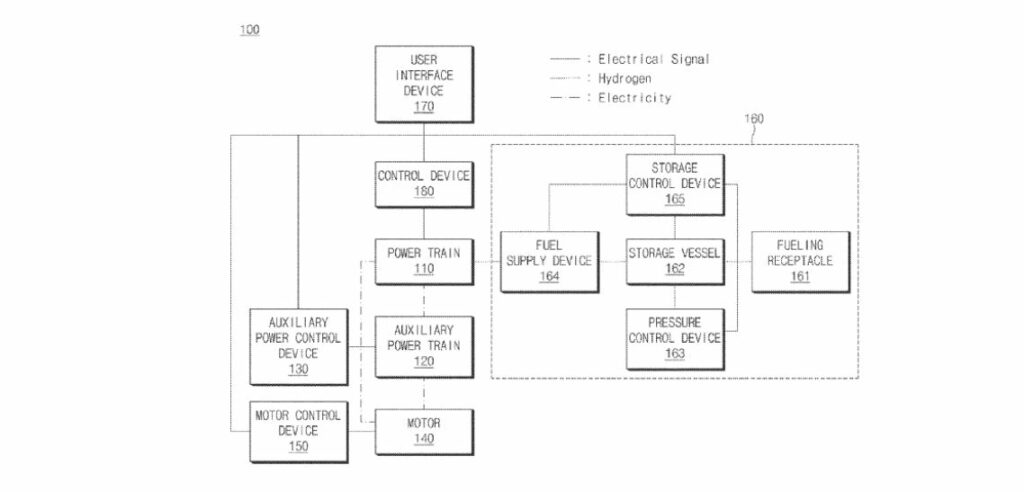Hyundai Motor Company filed a patent that could considerably advance the use of liquid hydrogen in vehicular applications. This patent, developed by a team of skilled engineers and researchers, outlines a system comprising a storage vessel, a power train, and a control device. This sophisticated framework aims to harness liquid hydrogen as a power source efficiently and safely.
Features and Improvements
The core improvement presented in this patent pertains to the control mechanism, which dynamically manages the storage vessel’s operating pressure. The control device adjusts the target operating pressure downward when entering a refueling preparation mode. It also compares the supply pressure of the liquid hydrogen to a target hydrogen supply pressure, subsequently limiting the power of the power train if the supply pressure falls short of the target.
Such innovation addresses several crucial challenges in existing liquid hydrogen-based systems. Traditional hydrogen storage and power generation setups often encounter issues related to pressure inconsistencies, which can affect performance and safety. Hyundai’s approach ensures a more stable and efficient hydrogen supply, enhancing the overall reliability of the propulsion system.
Potential Applications
This patented technology is primarily used in the automotive sector, particularly in hydrogen fuel cell vehicles (FCVs) and other forms of hydrogen-powered mobility solutions. This innovation could significantly benefit the design and operation of next-generation FCVs by offering a more efficient and safer way to manage liquid hydrogen.
Market Impact
This patent has the potential to influence the hydrogen market considerably. Improved safety and efficiency in hydrogen storage and usage can enhance consumer confidence, accelerating the adoption of hydrogen-powered vehicles. Furthermore, the refinement in performance management could lead to cost reductions in hydrogen fuel cell technology, making it more competitive with traditional internal combustion engines and electric vehicles.
Competitive Analysis
Hyundai’s patented technology offers notable advancements in managing hydrogen pressure and power generation compared to existing solutions. Hydrogen storage and power systems can suffer from pressure regulation issues, leading to inefficiencies and potential safety concerns. Hyundai’s novel control device addresses these gaps by proactively managing pressure levels and limiting power output under suboptimal conditions, ensuring consistent performance and safety.
Technical Specifications and Processes
Key technical components outlined in the patent include:
– A storage vessel for liquid hydrogen.
– A power train designed to generate power from the stored liquid hydrogen.
– A control device that adjusts the target operating pressure and monitors the supply pressure relative to the target hydrogen supply pressure.
– A system to limit the power of the power train if the supply pressure is inadequate.
The interplay between these components allows the system to maintain optimal performance and ensures that the vehicle operates safely and efficiently, even during refueling scenarios.
